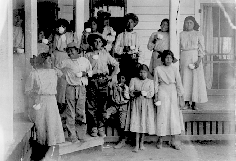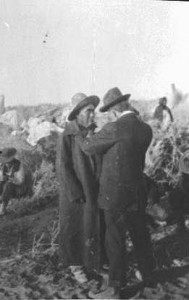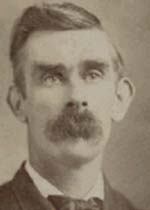When Native Americans were forced to live on reservations, their health declined. Poor food quality led to malnutrition and put them at risk for disease and ill health. Two diseases in particular, trachoma and tuberculosis, devastated Indian populations.
Trachoma is an easily transmitted virus that infects the eyes, and is usually picked up in childhood. It thrives in congested, unsanitary conditions, which developed when tribes were crowded together and prevented from moving around and relocating camps. Children would be re-infected so often that scars made the eyelids turn inward, causing the eyelashes to scratch the cornea. Victims said the pain nearly drove them wild, “as though cinders were in both eyes.” Permanent blindness often resulted.
Tuberculosis is a bacterial lung infection that causes death by suffocation from excess fluid (blood or phlegm) or by respiratory failure. Tissue in the lung is killed by TB and eventually the patient simply cannot absorb enough oxygen. By the mid-1800s, the Navajo death rate was ten times the national average. Prior to 1935, most adult TB patients were left to fend for themselves, while children attending boarding schools were either segregated or institutionalized. In 1904, Commissioner of Indian Affairs, William Jones, ordered all infected children out of the schools. Most returned to their reservations and died a slow death.

Group Picture at the Tuberculosis Sanitorium, Phoenix Indian School circa 1890-1910, courtesy National Archives
________________________________________________________


